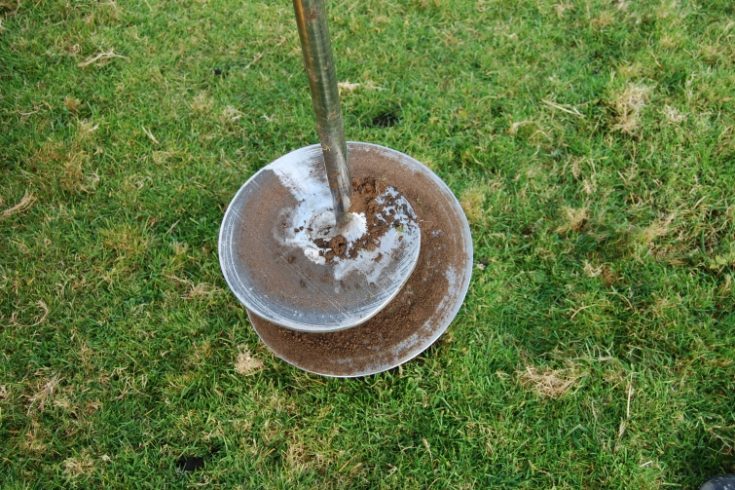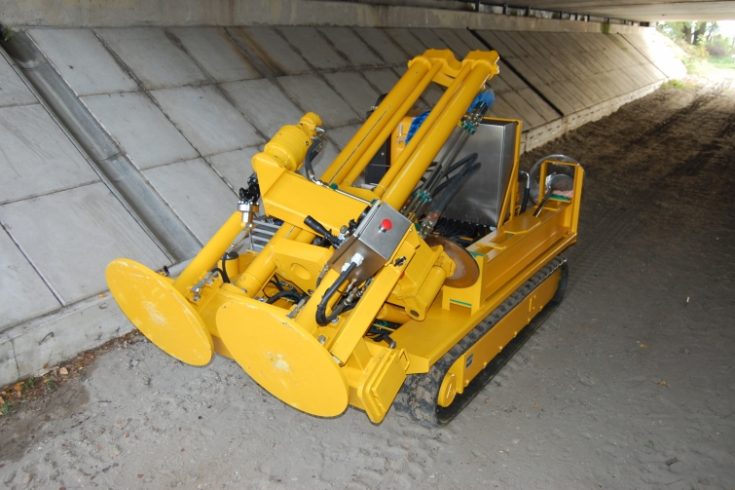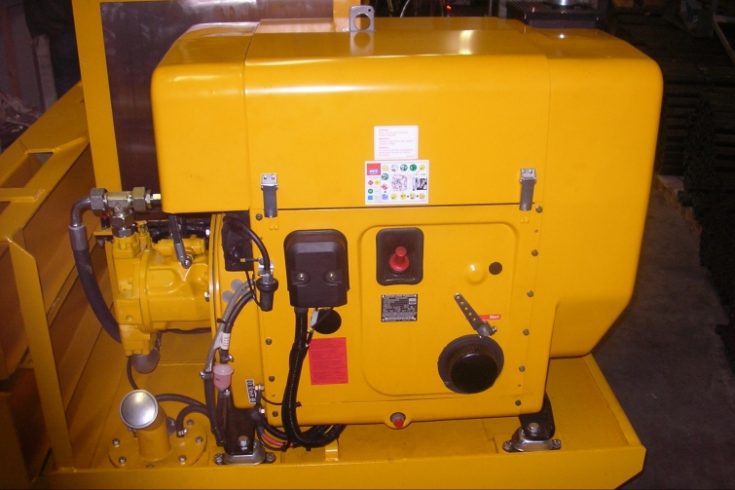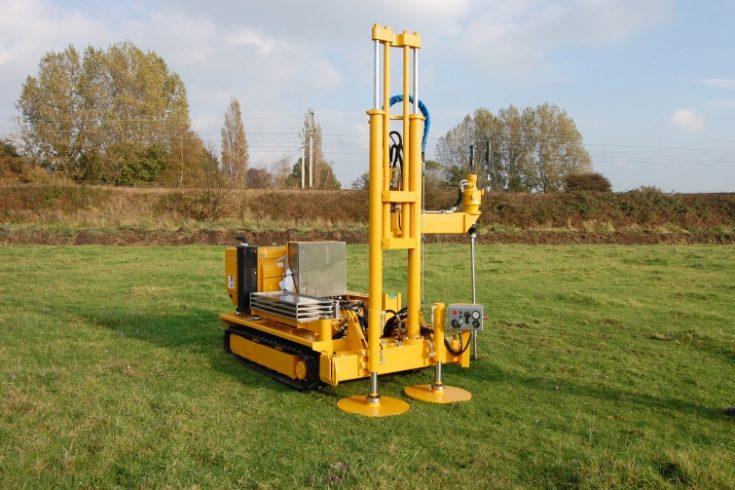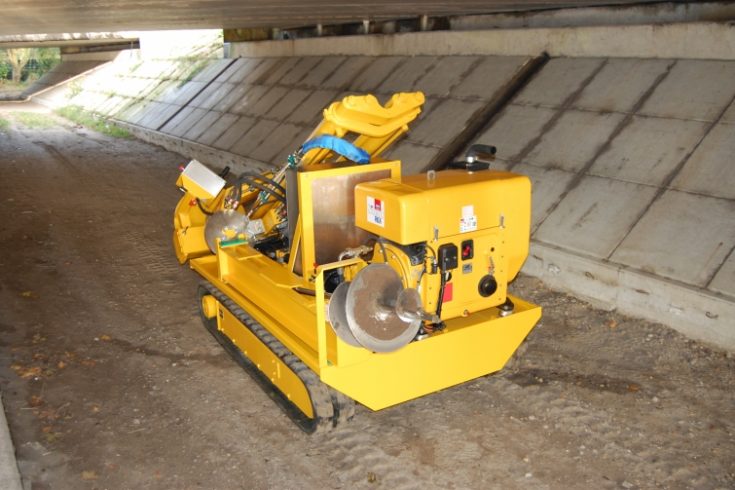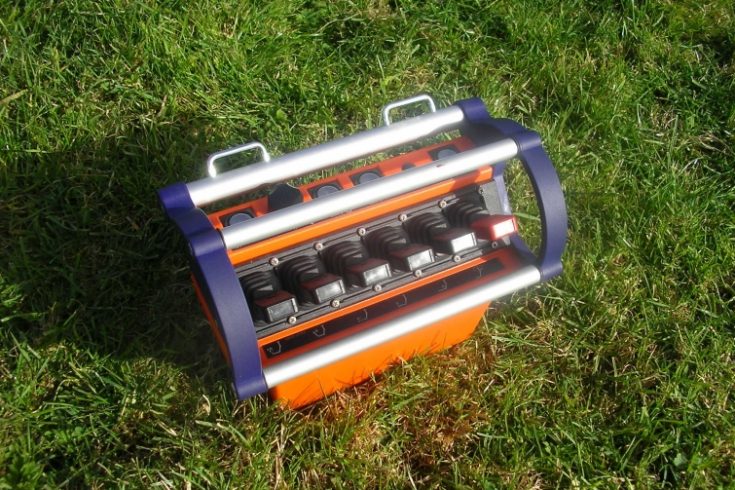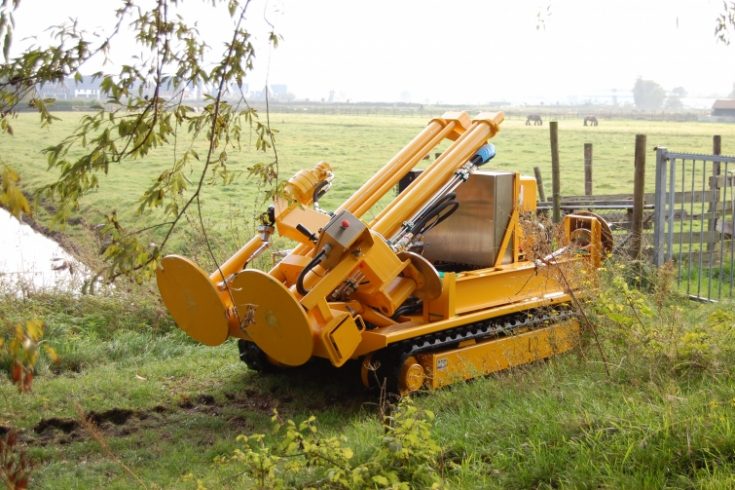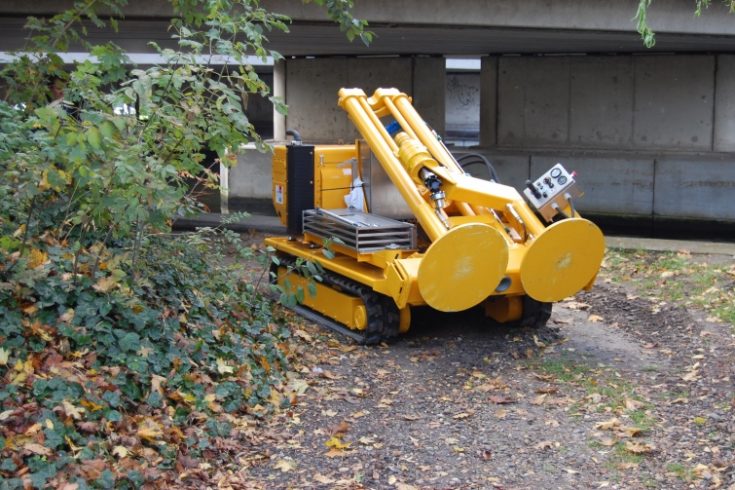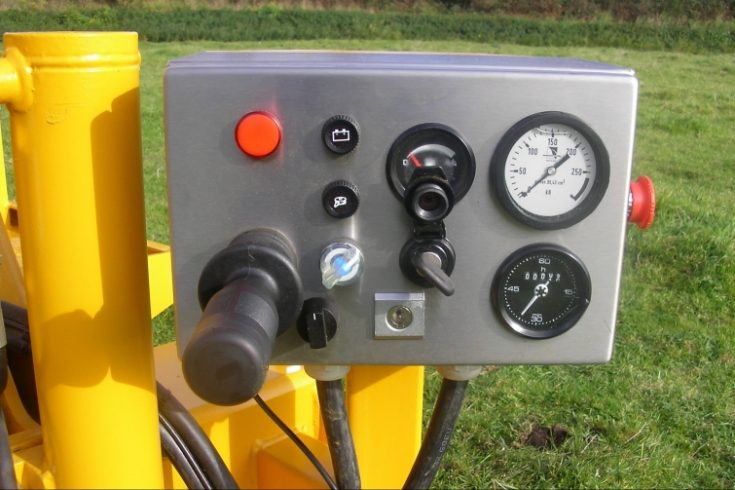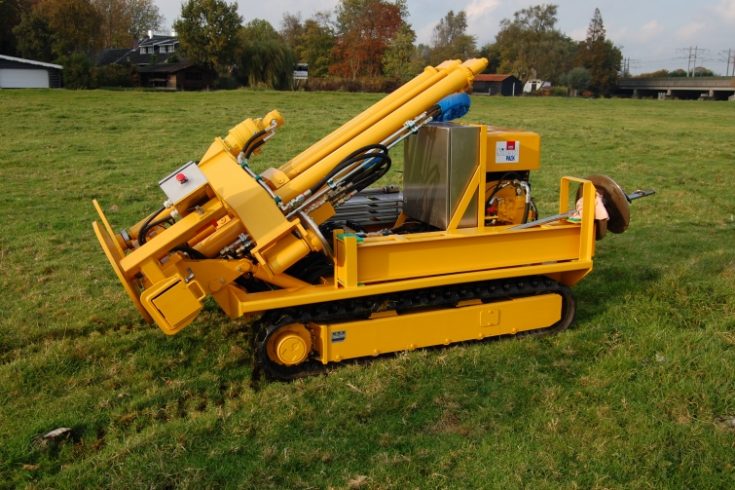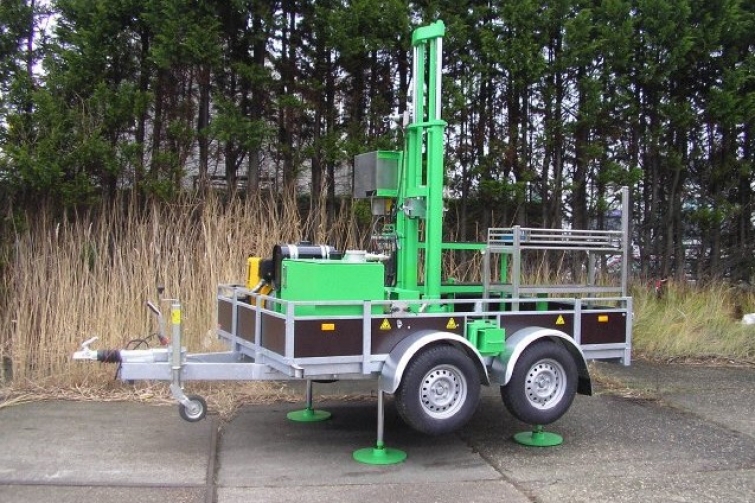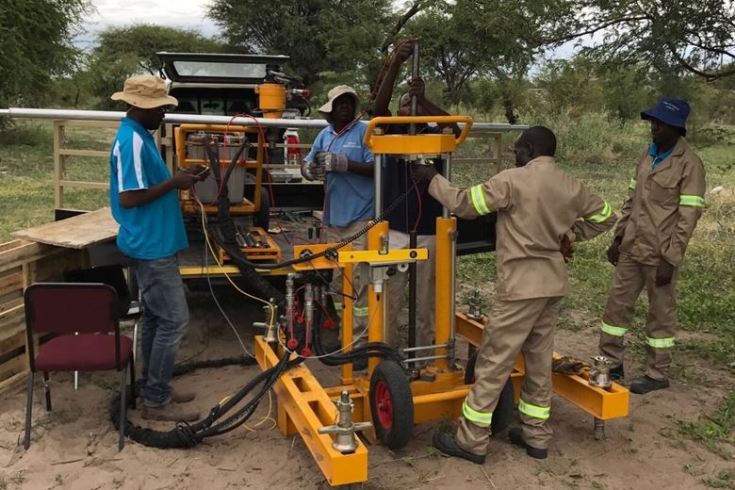Truly robust crawler-based CPT penetrometer pushing rig with rubber tracks, Hatz 3-cylinder diesel engine incorporated in a sound insulating enclosure, load-sensing hydraulic pump, a 200 kN CPT penetrometer pusher, unique anchoring system on reaction arm. Practically all functionalities are controlled by means of a wireless remote control.
The Griffin 200 kN is made of the highest quality components available and built to last. The choice for high quality components of well-known manufacturers having local service centers worldwide reduces machine downtime to a minimum.
Remote Control
The CPT penetrometer rig comes with a radio remote control system offering you an efficient method of operating the rig. This feature enhances the capabilities, improve productivity and allows you to work safely and efficiently at all times. The portable control unit is provided with six (6) levers and is impact and weather resistant with low weight and ergonomic design. The levers can give fully variable operation and are sprung loaded to return to the neutral position, i.e. “dead-man’s-handle”.
The radio remote control system allows for problem free proportional control of the hydraulic valves of the crawler-based penetrometer rig. It is extremely easy to use with speed, precision and control under maximum safety and is protected against electro-magnetic and radio frequency radiation. The radio transmitter and its antenna are built in.
Anchoring
4 ground anchors, which are screwed into the ground before testing and screwed out after testing, provide in general sufficient reaction force for the 200 kN pushing force of the penetrometer pusher when anchored in suitable grounds. Extra reaction force is obtained by using extension rods, anchors with larger blade diameter or by placing more anchors.
Anchor extension rods are used to increase the length of the ground anchor. They are most useful at sites where the soil at the surface is very weak, but the strength of the soil increases with a little depth. The extension rods can be invaluable at a site where there is a layer of fill covering stronger native soil. The extension rods have a female hexagonal drive on the bottom that pins to a ground anchor. On top it has a male hexagonal drive. The anchor extension rod is connected to the ground anchor using a high-strength bolt and nut (both included).
The rig is equipped with a very advanced anchoring system. The rotary drive is mounted on a reaction arm provided with hydraulic brakes on the hinge points. The reaction arm can swing freely around the pusher and the function of the hydraulic brakes is to lock the reaction arm and prevent it from moving as soon as it is in the right position.
Using this system the ground anchors can be placed at that spot that suits the operator best. The reaction arm is fixed to the CPT penetrometer pusher; the latter provides the vertical force on the ground anchor. The vertical movement of the CPT penetrometer pusher is synchronised with the rotation speed of the rotary drive and in line with the pitch of the ground anchors.
Anchor extension rods are used to increase the length of the ground anchor. They are most useful at sites where the soil at the surface is very weak, but the strength of the soil increases with a little depth. The extension rods can be invaluable at sites where there is a layer of fill covering stronger native soil.
The ground anchors are available with 3 different blade diameters, i.e. 220, 300 and 400 mm.



